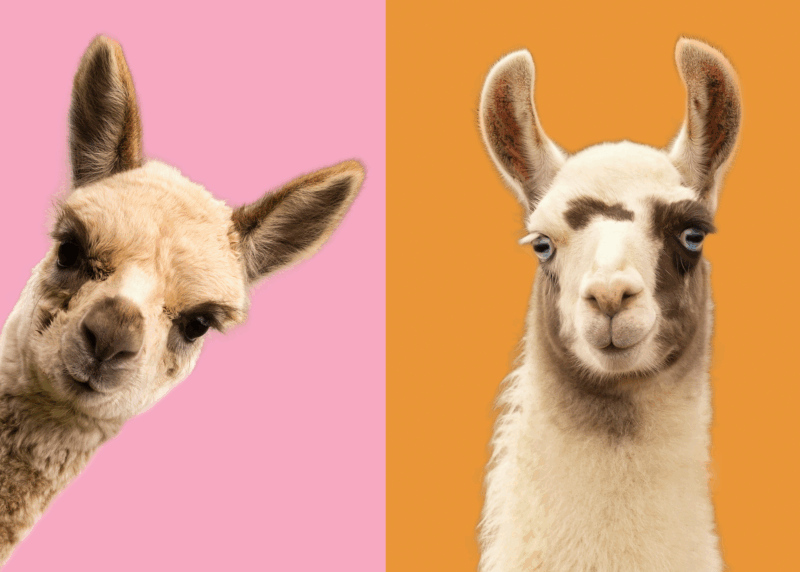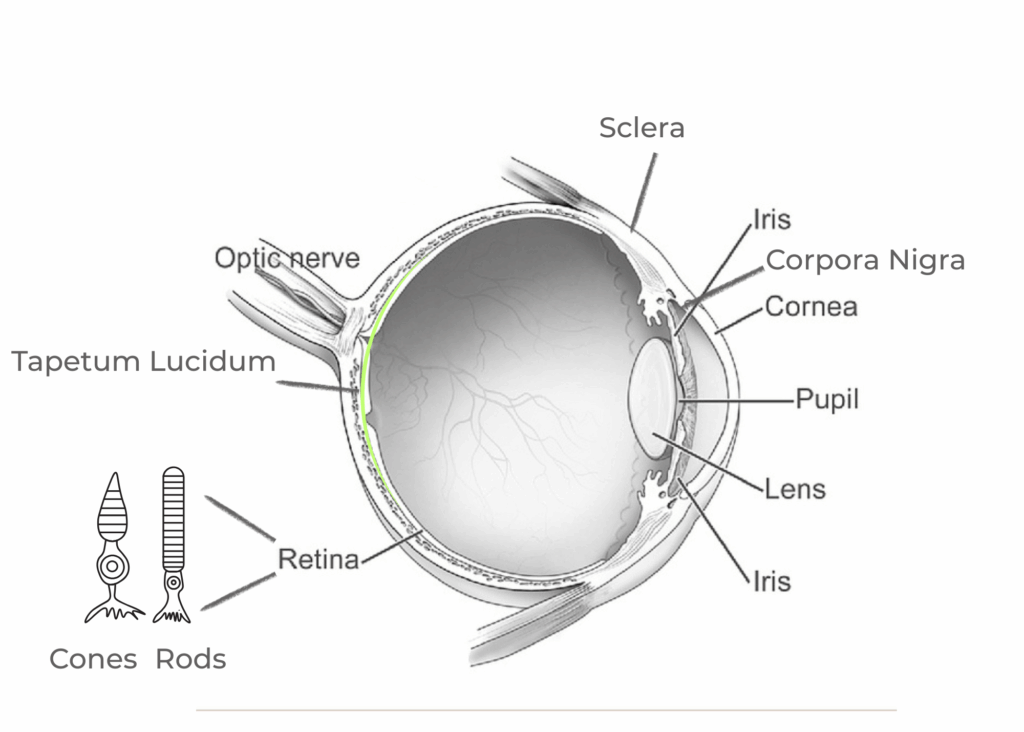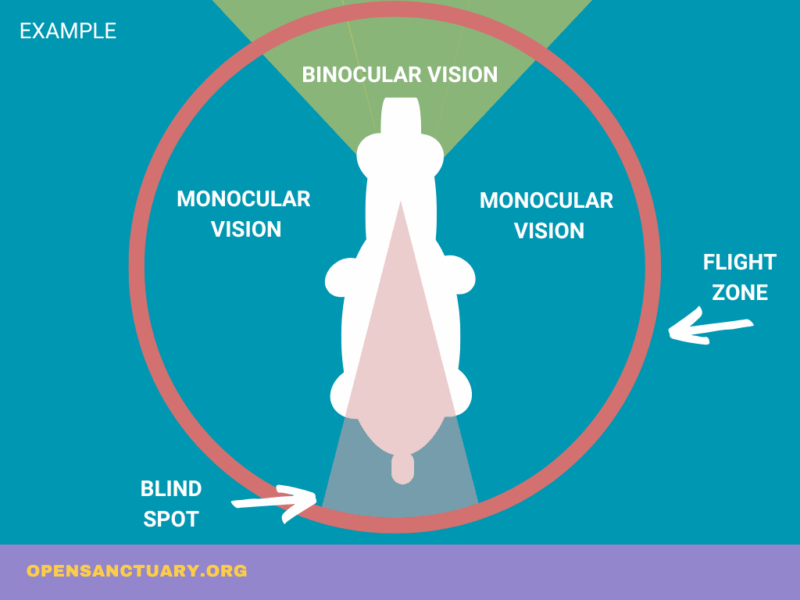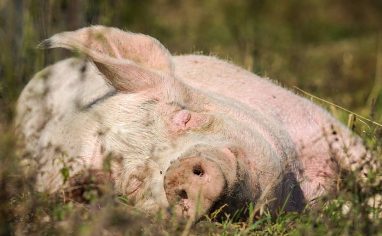
Seeing Through Their Eyes: Understanding Alpaca and Llama Vision to Improve Sanctuary Care
Deepening our understanding of how sanctuary residents experience the world can help caregivers provide more thoughtful, effective care. We love the residents we care for—that’s why we do what we do. Sometimes, it’s easy—and often well-intentioned—to assume that residents perceive the world in the same way we do. This kind of projection can foster empathy on a general level and is important when considering the lives of nonhuman animals: no one likes discomfort, and most of us have preferences for our favorite treats. But when it comes to the five senses—sight, sound, taste, touch, and smell—how individuals experience the world can differ significantly based on their experiences and biology.
This is true across species and even within them. For example, humans, as a species, are said to have 20/20 vision, yet how many people do you know who wear glasses? The same variation applies to alpaca and llama residents. However, despite individual differences, there are general traits we can learn about that allow us to connect more meaningfully with our camelid residents and provide better care.
This article is part of a five-part series exploring how alpacas and llamas experience the world through their senses. Today, we’re focusing on vision—what alpacas and llamas can see, how their vision differs from ours, and what this means for the care we provide.
Ocular Insights: Camelid Vision and Care
Alpacas and llamas have large, prominent eyes that give them a wide field of vision, helping them stay alert to predators while grazing. Their horizontal pupils and reflective tapetum lucidum enhance low-light vision, allowing them to see well at dawn, dusk, and in shaded areas. Because alpaca and llama eyes are so prominent, they are prone to injury, making careful observation by caregivers essential to noticing subtle changes in eye health. But vision alone doesn’t tell the whole story. To understand their world more fully, we first need to learn about the structures of their eyes and how those structures work.
A Peek Inside: Alpaca And Llama Eye Anatomy
Like our own eyes, camelid eyes contain familiar structures such as pupils, lenses, and retinas. Yet there are important differences that shape how camelids experience their surroundings. Their pupils are horizontal ovals, and they have a special reflective layer that boosts night vision. Together, these features affect not just what they can see, but how they interpret what they’re seeing.

By looking at the major parts of alpaca and llama eyes, we can begin to understand both the strengths and limitations of their vision. Let’s break down some of the basic parts of the eye and how they function:
- Cornea: The cornea is the clear, dome-shaped outer surface of the eye. It protects the eye and allows light to enter, also helping focus that light onto the retina. Just beneath the cornea are the sclera (the white of the eye), the iris, and the pupil.
- Sclera: The white portion of the eye, which provides structure and protection.
- Iris: The colored part of the eye—typically a shade of brown but can also be light grey/blue. Sometimes one eye may be blue and the other brown. The iris regulates how much light enters the eye and is part of the uveal tract, which supplies blood to parts of the eye.
- Pupil: The black, round opening in the center of the iris that controls how much light enters the eye by expanding in low light and contracting in bright light.
- Lens: Located just behind the iris, the lens focuses light onto the retina. It changes shape depending on the distance of what the camelid is looking at—becoming thicker for close objects and thinner for distant ones. This shape-shifting is controlled by the ciliary muscles (not shown in basic diagrams).
- Retina: The inner lining at the back of the eye, containing millions of photoreceptors—light-sensitive cells known as cones and rods—that convert visual information into electrical signals. These signals are transmitted to the brain via the optic nerve.
- Cones: Cone cells are responsible for vision in bright light and for detecting color. Humans have three cones, making us trichromats (we see reds, greens, and blues). With two cones, camelids are dichromats—they see blues and yellows more readily, while reds and greens may blur together.
- Rods: Rod cells help with vision in low light.
- Tapetum Lucidum: A layer of light green tissue behind the retina that reflects light back through it, allowing camelids to see better in the dark. (We lack this structure—when you see glowing eyes in the dark, this is due to the tapetum lucidum.)
- Corpora Nigra: Also called “iridic granules,” these ruffle-shaped structures atop the pupil reduce glare from bright sunlight. Alpacas and llamas have especially prominent iridic granules.
While alpacas and llamas share similar eye structures with other mammals, they have an epithelium about 30% thicker than that of many species. This is believed to provide additional protection from ultraviolet light as well as from dehydration and trauma.
Now that we’ve learned about a alpaca and llama basic eye structures and their purposes, let’s jump into the world of camelid vision!
A Wide View, Limited Depth
Once we understand the parts of the eye, we can better learn how our alpaca and llama residents “view” the world. With eyes on the sides of their heads, camelids rely mostly on monocular vision—each eye sees a slightly different slice of the world. Their binocular overlap (where both eyes focus on the same object) is only about 20–50 degrees, so depth perception isn’t their strong suit.

Eye placement also results in a limited vertical field of view. While we can look straight out and see both the sky and the ground, camelids can’t. This is why they often lower their heads—to check the ground.
Still, one of the most remarkable aspects of alpaca and llama vision is just how much of the world they can see at once. Their monocular vision gives them an impressive field of view—nearly 330 degrees compared to our 180! This wide view allows them to scan their environment for potential threats almost constantly, making it challenging for predators to sneak up on them.
Differences Between Llama and Alpaca Vision
While llama and alpaca eye anatomy and ability overlap significantly, there are some differences. A study found that llamas may be more near-sighted than alpacas and may also have some astigmatism, while alpacas do not. Interestingly, female llamas were found to be slightly more near-sighted than males, a difference theorized to relate to eye size—specifically, the distance between the front and back of the eye and the curve of the cornea.
While alpacas and llamas may not see colors as richly as most humans do, they can still distinguish between colors, as can be seen in this video. (This can be a fun cognitive, social, and sensory enrichment activity to try with your camelid residents!)
Alpacas and llamas are also keenly attuned to movement. Their impressive monocular vision helps them stay alert to any environmental changes or potential threats. Keep this in mind as you move about sanctuary spaces.
Recognizing Faces—and Problem-Solving
Vision doesn’t just help alpacas and llamas navigate their environment—it also plays a role in their social lives. Camelids can recognize familiar faces, especially those of their herd-mates. While that may not seem surprising, studies show that alpacas and llamas can learn through social learning—by watching other herd-mates perform actions. They can also learn by observing humans.
For example, a llama resident named Tank may figure out how to lift a gate latch just by watching you! (Make sure those latches are secure.)
When Sight Fades: Eye Conditions in Alpacas and Llamas
As with humans, alpaca and llama vision can be compromised by age, illness, or injury. Eye conditions are not uncommon, and awareness helps caregivers know what to keep and eye out for.
Some of the most common conditions include:
- Cataracts: Cataracts are common. While the cause isn’t always known, they may have a hereditary component or be caused secondarily to inflammation in the eye from injury or diseases.
- Corneal Ulcers/Injuries: Camelids’ prominent eyes make them prone to scratches and trauma.
- Age-Related Changes: Like many beings, older camelids may lose some sight, affecting how they navigate their space and interact with their social group.
How Can Caregivers Support Alpaca and Llama Vision?
We’ve learned the basics of eye anatomy, their wide field of view, and their challenges with depth perception. Now we can apply this knowledge to caregiving practices. Understanding how alpacas and llamas see the world isn’t just interesting—it’s practical. Here are some ways caregivers can use this information to enhance resident well-being:
- Avoid Startling Approaches: Move slowly and calmly. Talking in a low, gentle voice as you approach allows camelids to locate you and helps prevent them from being startled—especially when you’re in their blind spot. Approach from an angle where they can see you clearly. Learn about flight zones here.
- Monitor Eye Health: Routine health checks are essential, but daily observation is just as important. Practicing your observational skills can help you catch early signs of eye problems or other health issues before they worsen.
- Design with Vision in Mind: Open, uncluttered areas help camelids navigate confidently. While physical enrichment is important, residents with limited depth perception or vision impairments need safe, predictable access to shelter, water, food, and enrichment. Avoid placing small objects low to the ground where they could become tripping hazards.
- Guide with Their View in Mind: Remember that camelids’ depth perception is limited, and they often can’t see the ground near their feet. This can make them uncertain about steps or sudden changes in terrain.
- Include Visual Enrichment: Camelids rely heavily on vision, so visual enrichment can support their well-being. Hang a photo of a familiar friend, ensure visual access to herd-mates if a resident must be temporarily isolated. This combines sensory enrichment with social enrichment. Provide enrichment objects that are distinctly different colors and see if they have a preference.
- Consider the Individual: Every resident is unique. Observing and adapting care to each camelid’s strengths, challenges, and preferences ensures that every individual feels supported and safe.
In Summary
Alpaca and llama residents experience the world differently from how we do. With wide but shallow vision, a need to lower their heads to see the ground, and sensitivity to movement, their sight shapes how they navigate and interact with their world. By striving to “see through their eyes,” we can deepen our connection with them and create care environments that feel safer and more intuitive.
We hope you found this resource helpful! If you have questions or would like to share your experiences, please let us know. Up next in our sensory exploration: how alpacas and llamas experience the world through sound.
SOURCES
Behavioural Biology Of South American Domestic alpacas and llamass: An Overview From A Welfare Perspective | Small Ruminant Research (Non-Compassionate Source)
Ophthalmology of South American Camelids | Veterinary Clinics of North America: Food Animal Practice (Non-Compassionate Source)
Diagnostic Ophthalmology |The Canadian Veterinary Journal (Non-Compassionate Source)
Ophthalmology of clinically normal alpacas (Vicugna pacos) in the United Kingdom: a cross-sectional study | Vet Record (Non-Compassionate Source)
Llamas Use Social Information From Conspecifics And Humans To Solve A Spatial Detour Task | Animal Cognition (Non-Compassionate Source)
The Response of LLamas (Lama Glama) to Familiar and Unfamiliar Humans | International Journal of Comparative Psychology (Non-Compassionate Source)
Non-Compassionate Source?
If a source includes the (Non-Compassionate Source) tag, it means that we do not endorse that particular source’s views about animals, even if some of their insights are valuable from a care perspective. See a more detailed explanation here.








